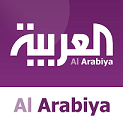Sec. Albright on the future of the Middle East
Human potential is the Middle East’s greatest resource
By Madeleine Albright and Stephen J. Hadley
There is something exciting happening in the Middle East. While many in the United States and elsewhere see only war and crisis, there is bigger change afoot that has the potential to break the current cycle of conflict.
Over the past eighteen months we have been engaged in a bipartisan initiative seeking to identify a new and better approach toward peace and prosperity in the Middle East. We visited with and listened to people from the region. We consulted the region’s experts. We sought voices from all levels of society, from refugees and students to business leaders and monarchs. What we found was a sense of confidence and determination, even amidst all the challenges that the region now faces.
At the heart of the Arab uprisings in 2011 was the idea that people in the region wanted the chance to define and pursue their own vision for the future. Where governments sought to suppress these aspirations, war and instability broke out, destabilizing not just the region but also setting off massive refugee flows and terrorist movements that have upended Western politics.
Yet in other parts of the region, governments took the uprisings as a signal that they needed to provide more opportunity for their people. In some cases, like Tunisia, this meant corrupt leadership being forced to step aside to let the people chart their own course. In others, like Jordan, Saudi Arabia, and the UAE, governments have sought reforms within the system, striving to put young people front and center in helping to shape their countries’ futures. While they still have much progress to make, they are moving in an encouraging direction.
Harnessing the power of youth and technology
We heard about young people eager to build their own businesses rather than relying on government to provide employment. We learned that 36 percent of Arab youth aspire to start their own companies, and are using the power of new technology to do so. We also found that one third of these Middle East start-up founders are women—more than ten times the rate of female founders in Silicon Valley.
This is a population that is full of ingenuity, using their resourcefulness to solve problems where their governments have failed them. Syrian refugees in Jordan are harnessing the power of 3D printing to build prosthetics for victims of violence. And in cases where people don’t yet have the necessary skills to accomplish their goals, they are using tech-enabled education tools to learn what they need to know, even in the absence of formal classrooms.
We believe that this vast human potential is the Middle East’s greatest resource. However, despite their growing self-confidence and capabilities, the people of the region still need help for these positive efforts to take root.
The single biggest barrier standing between the Middle East and a prosperous future is the continuing instability generated by the civil wars in Syria, Libya, Yemen, and Iraq. Regional actors have proven themselves as yet unable to bring these wars—and their worst atrocities—to an end. At the same time, they are more willing than ever to try, including through devoting their own resources to the effort. A relatively modest amount of leadership and assistance from the United States and other concerned members of the international community could go a long way toward helping to begin to wind down these conflicts.
‘Outsiders will not make the efforts’
But we should make no mistake here. The days when outside powers could dictate events in the region are over—if they ever existed in the first place. The days of massive troop deployments or military occupations by any outside power are past. Instead, outside help and support must be focused on empowering and enabling the people of the region and their leaders to chart and achieve their own vision for the future. The region needs more local initiatives that gain regional and global support.
Outsiders will not make these efforts, however, if the people and governments of the region are not taking the kinds of actions that will lead to sustainable peace, prosperity, and stability. For without such action by the region, outside efforts will be losing investments. What we learned from the region is that its governments need to make real progress toward transparent, accountable, effective, and fair governance free of corruption. They need to deliver for their people—for all of their people—regardless of gender, sect, tribe, religion, or family connections. And they need to create opportunities for their people not only through better education but also through regulatory reforms that can encourage and enable entrepreneurship and innovation.
If these changes take place, they can become a New Compact for the region—one which improves not only relations between regional states and outside powers, but also redefines how the states of the Middle East interact with each other and, most importantly, with their people.
There is a pathway out of the current regional crises. But our efforts of the past year and a half have taught us that a new strategic approach is required. The Middle East must bet on its people and on a new partnership among the international community, the states of the region, and their people. Only in this way can the Middle East realize its vision of a more peaceful, prosperous, and stable future.

